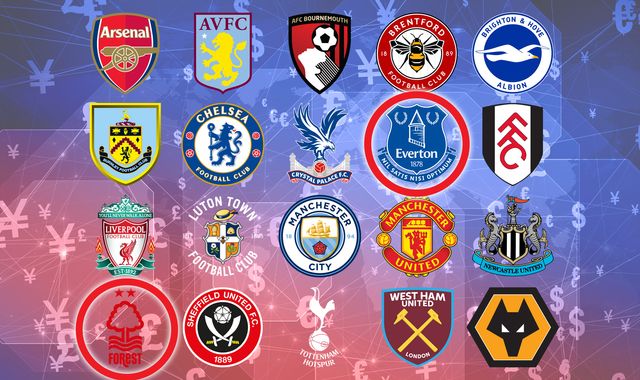Home » Big Money League: A Decade of Spending in the Premier League

Big Money League: A Decade of Spending in the Premier League
As a domestic football league, the Premier League is the most popular worldwide. Millions of people watch it across the globe and its popularity continues to grow. In December 2023, a record-breaking £6.7 billion deal with Sky Sports secured broadcast rights, promising an unprecedented number of televised games weekly from 2025/26.
This surge in revenue growth has affected transfer spending dramatically within the Premier League. Let’s take a look at ten years’ worth of big-money moves and see what this has done to the landscape.
A Golden Age of Spending: Who Are the Top Spenders?
Fans recently gained valuable insight into spending habits when figures for the “Big Six” were revealed. Between 2013/14 and 2023/24 Manchester United were the biggest spenders with £1.53billion worth of net spend. However, Chelsea outspent them in total with an outlay of £2.03bn. Notably, the Blues managed to balance their spending with income, achieving a net spend of £849 million. This financial prowess also translated to on-field success, with eight trophies secured in the decade – an impressive £108 million per trophy.
Meanwhile, Manchester City spent £1.53 billion on players but brought in £620 million (net spend: £918 million). While Arsenal had a significant net spend of £851.7 million, Liverpool boasts the most trophies per net spend ratio among the Big Six. They secured seven trophies in ten years with a net spend of £386.5 million, translating to a remarkable £55.2 million per trophy.
A League Transformed: The Impact of Big Spending
Looking beyond the Big Six, a remarkable statistic emerges: only QPR, Norwich, and Swansea made net profits in the transfer market during this period. Despite enjoying Premier League stints, these clubs currently reside in the Championship, highlighting the financial challenges of establishing oneself in the top flight.
Stats from Transfermarkt reveal a colossal €17.6 billion spent by the current Premier League clubs in the past decade, translating to roughly $18.87 billion or £15 billion. Unsurprisingly, the Big Six are responsible for well over half of this spending, with a combined €10.1 billion shelled out in ten years.
Although there was a significant drop off from previous windows in January 2024, overall spending appears to show consistent growth over time. The introduction of Profit and Sustainability Regulations (PSR) in 2013 by the Premier League seems to have contributed to this decline in spending seen by 2024. These regulations demand financial accountability from clubs, with potential sanctions for excessive losses. Currently, several clubs face investigations for alleged breaches of these regulations.
Conclusion:
The Premier League is experiencing an era of unprecedented expenditure driven by lucrative broadcast deals and wealthy owners. This financial muscle has undoubtedly transformed English football, but whether or not this will affect competitive balance or clubs’ long-term sustainability remains to be seen.



